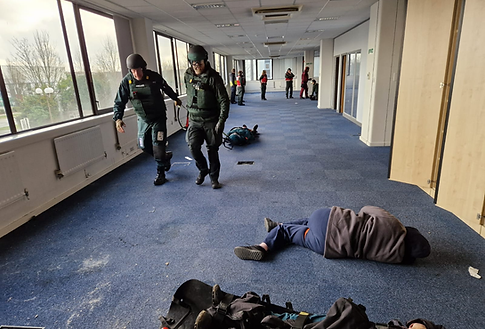
WHAT WE DO
Sussex Community Search Team (SCST) members have been Police vetted and specially trained to systematically search for missing persons and associated property/evidence to the standards required by the Police.
Our Primary Role
When a high-risk vulnerable person is reported missing an urgent search may be needed, but this could be at a time when available Police resources are already heavily committed to other critical tasks.
Our dedicated volunteers enable the Police to call upon a trusted group of trained and vetted searchers to supplement their professional resources, at minimal cost.


Searching for a missing person (misper) takes a lot of effort. SCST can, at short notice, call on around 100 fully trained and experienced searchers, who the Police know they can trust to conduct a speedy yet thorough search of areas allocated to them. Once tasked, we will carry out the required search and keep the Police updated, interacting with their officers as appropriate, so that missing persons have the best possible chance of being located quickly. Finding the missing person as soon as possible might be key to their survival, and can provide enormous comfort and relief to their relatives and friends.
A missing person is often someone considered as having a high-risk vulnerability: this might be due to their age – young or old - certain medical conditions or even their clothing e.g. pyjamas in winter. We sometimes operate not only with the Police, but alongside Sussex Search & Rescue and Search Dogs Sussex. Sometimes the search needs to cover a large area rapidly and every trained searcher is valuable. At other times a more thorough search is needed, for example, not every missing person wants to be found or they might have collapsed or been injured.
There are two excellent guides to police practice for missing persons:
'How the police search', written by the 'missing people' charity in conjunction with the police, has a number of helpful guides: they can be found here.
A more technical and detailed guide is the authorised Police practice, written by the College of Policing, and can be found here. Scroll down the page to find the navigation: there's everything from an overview and introduction to quick reference guides. It is written for police officers and so is comprehensive and definitive.
Property/Evidence
searches
These searches are a slower and methodical type, requiring a careful examination of the scene.
The sought item might be a good size, shiny and brightly coloured like a bike, but difficult to see in thick summer undergrowth. Or the item could be small and concealed, like a knife pressed into the ground to prevent it being found. We search for items of property associated with a missing person, to help establish a trail, timeline, or which could be potential evidence of a crime.
The Police task us with Safety Sweeps which are often in recreational areas to search for discarded/hidden items that could put the public at risk.

Community Support
We also assist in other urgent situations wherever willing, trusted and diligent hands are needed.
Good examples are:
-
Supporting the NHS response to the pandemic.
-
Preparedness to help Sussex Resilience Forum partners in the event of a civil emergency.
-
Providing actors to support SECAMB, Fire & Rescue Services and Sussex Police in various casualty and training scenarios.
-
Supporting water authorities with volunteers to distribute bottled water during water supply emergencies.
-
Assisting the Environment Agency with weather alert warnings and flooding situations.
-
Attending events to raise our profile and recruit.




JOIN US
Please fill in this form and we'll be in touch.
